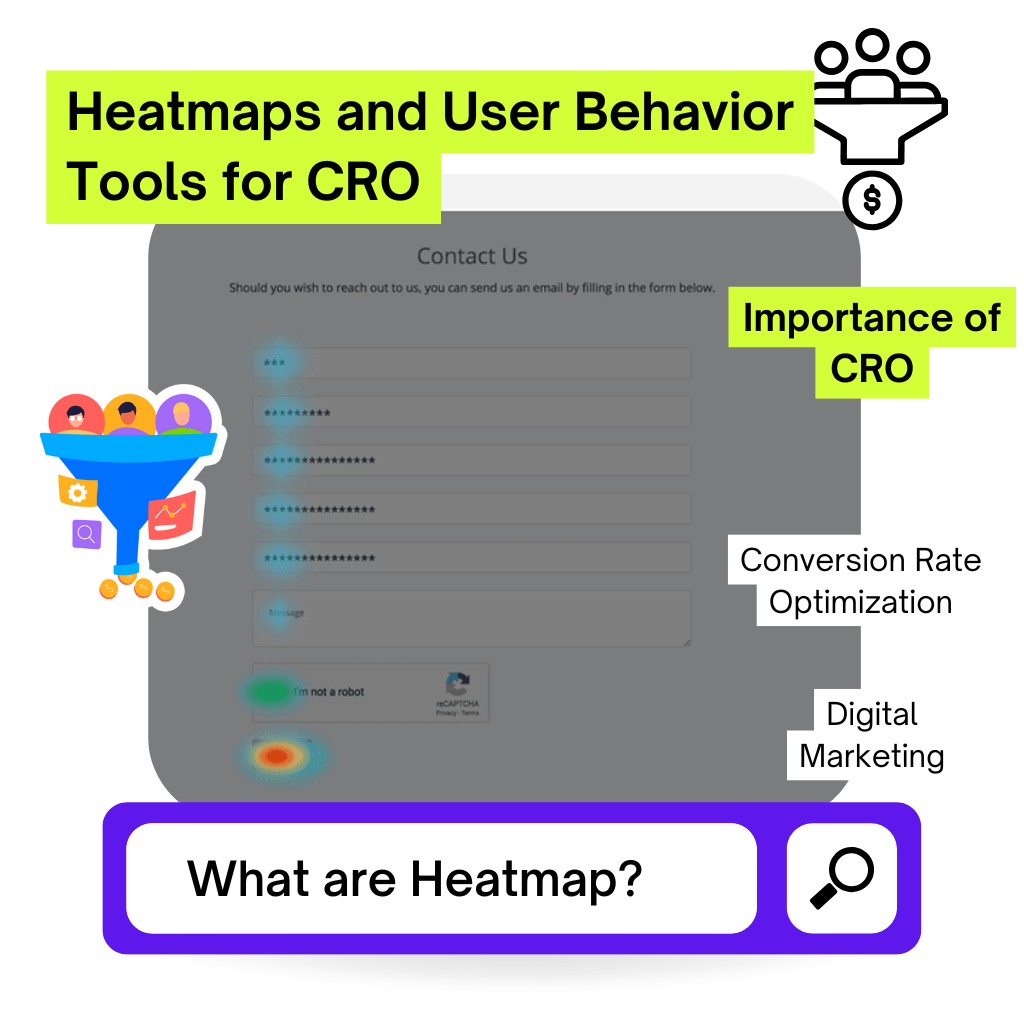
Heatmaps and User Behavior Tools for CRO
Introduction
Conversion Rate Optimization (CRO) is a crucial aspect of digital marketing, ensuring that website visitors take desired actions such as making a purchase, filling out a form, or signing up for a newsletter. One of the most effective ways to optimize conversions is by leveraging heatmaps and user behavior tools. These tools provide valuable insights into how users interact with a website, allowing businesses to make data-driven decisions to enhance user experience and increase conversion rates.
In this guide, we will explore the different types of heatmaps, the best user behavior tools available, and how to use these insights for effective CRO.
1. Understanding Heatmaps for CRO
a) What Are Heatmaps?
Heatmaps are visual representations of user interactions on a webpage. They use color gradients to indicate areas of high and low engagement, helping marketers and designers understand how visitors navigate a site.
b) Types of Heatmaps
Click Heatmaps: Show where users click the most, highlighting popular elements like buttons, links, and images.
Scroll Heatmaps: Indicate how far users scroll down a page, revealing if important content is being missed.
Move Heatmaps: Track mouse movements, suggesting where users pay the most attention.
Attention Heatmaps: Display areas that receive the most engagement based on dwell time and interactions.
AI-Powered Predictive Heatmaps: Estimate user behavior using artificial intelligence before actual user data is collected.
c) Benefits of Using Heatmaps for CRO
Identify high-engagement areas.
Detect usability issues.
Improve call-to-action (CTA) placement.
Enhance mobile user experience.
Optimize landing pages for higher conversions.
2. Top User Behavior Tools for CRO
a) Heatmap and Behavior Analytics Tools
Hotjar
Click, scroll, and move heatmaps.
Session recordings and surveys.
User feedback collection.
Crazy Egg
Heatmaps and A/B testing.
Confetti reports to analyze different traffic sources.
Scroll maps for content engagement insights.
Mouseflow
Click and scroll heatmaps.
Funnel analytics for conversion tracking.
Form analytics to optimize input fields.
Lucky Orange
Heatmaps and visitor recordings.
Live chat integration.
Conversion funnels and form analytics.
FullStory
Session replays and heatmaps.
AI-driven insights and issue detection.
Advanced analytics for behavior trends.
b) Other Behavior Tracking Tools
Google Analytics (Enhanced with Heatmap Integrations)
Tracks user journeys and drop-offs.
Integrates with heatmap tools for deeper insights.
Microsoft Clarity
Free heatmap and session recording tool.
Identifies frustration signals like excessive clicks.
Provides engagement metrics for UX improvements.
VWO (Visual Website Optimizer)
Heatmaps combined with A/B testing.
Behavioral targeting and campaign tracking.
3. How to Use Heatmaps and Behavior Tools for CRO
a) Identifying and Fixing UX Issues
Detect unclicked CTAs and reposition them.
Find distraction points causing users to abandon pages.
Identify and remove unnecessary elements that clutter navigation.
b) Improving Landing Pages
Use scroll heatmaps to ensure key messages are visible.
Optimize CTA placement based on click heatmaps.
Adjust design to improve readability and engagement.
c) Enhancing Mobile Experience
Use mobile-specific heatmaps to find usability issues.
Optimize touch targets and button placements.
Remove unnecessary pop-ups that disrupt the user flow.
d) A/B Testing with Heatmaps
Test different CTA colors and placements.
Compare heatmap results before and after design changes.
Use behavior insights to refine product pages.
4. Best Practices for Using Heatmaps and CRO Tools
a) Collect Sufficient Data
Analyze heatmaps for at least a few thousand visitors to get meaningful insights.
b) Segment Your Audience
Compare new vs. returning visitors.
Analyze mobile vs. desktop behaviors.
c) Combine Heatmaps with Other Analytics
Use Google Analytics for quantitative data.
Implement surveys and polls to understand user intent.
d) Continuously Optimize and Test
Run A/B tests based on heatmap insights.
Regularly update landing pages for better conversions.
Conclusion
Heatmaps and user behavior tools are powerful resources for improving conversion rates and enhancing user experience. By understanding where users click, how they navigate pages, and what drives engagement, businesses can make informed decisions that lead to higher conversions. By integrating heatmap insights with A/B testing and continuous optimization, companies can create more effective digital experiences that drive long-term success.
Implementing these strategies will help businesses identify usability issues, optimize landing pages, and ultimately maximize ROI from their CRO efforts.
Author



